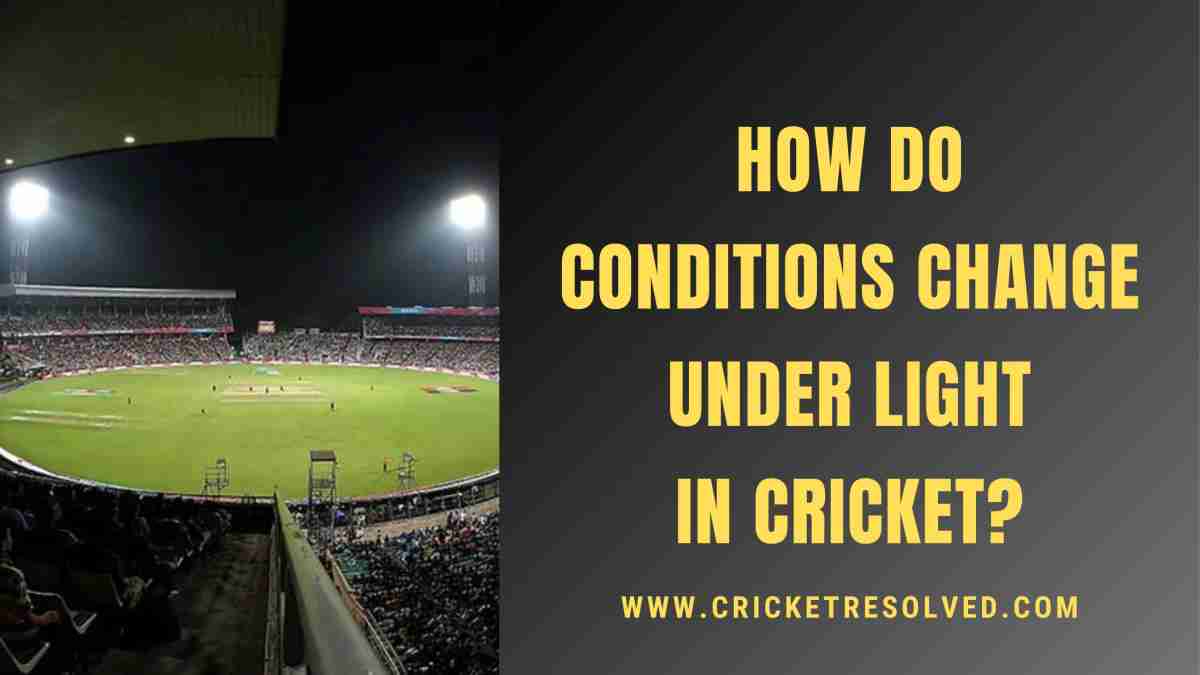
Cricket is played during the day and night. In day matches, natural sunlight shines in the eyes of the players, while at night, floodlights illuminate their faces.
Players encounter various challenges during matches, such as fielders making mistakes, batsmen struggling with predicting the ball, and bowlers having difficulty swinging and seaming the ball.
Light affects various conditions in matches like these, but how do conditions change under light in cricket? And how do players adapt to overcome them?
In this article, we’ll understand the changing conditions due to light in cricket and explore potential solutions.
Why Does Light Affect Cricket?
Light affects cricket in two main ways:
- Visibility: Batsmen and fielders both face difficulty seeing the ball in natural faded light and overcast weather conditions. This leads to challenges in judging the line and length of the ball for batsmen and mistakes in reaction time for fielders, potentially causing injuries.
- Playing Conditions: Long shadows, whether from sunlight or artificial lights, create unfavourable conditions for bowling and batting. Continuous play in bad light can lead to dew formation on the ground, affecting the ball’s grip and making it difficult for bowlers to seam or swing the ball.
Also Read | The Dew Factor: Understanding its Impact on Cricket
How do Conditions Change Under Light in Cricket?
Conditions can change in cricket due to natural light and artificial light.
Natural Light: As the sun rises, dawn occurs on the ground, and at sunset, dusk happens, decreasing the intensity and level of light. This makes visibility challenging for players.
Artificial Lights: Used predominantly at night, these lights can create unfavourable conditions if they start fluctuating. Inconsistent light makes it difficult for players to see the ball clearly, resulting in misfields, missed bowls, and wrong shot selections by batsmen. Floodlights, often placed around the ground, form additional shadows, creating uneven conditions for players.
How Does Light Affect Cricket Players?
Players face numerous challenges due to these conditions, but they still play! How?
Players adapt to changing lights in several ways:
Bowlers: They adjust their pace and swing based on shadows, targeting areas not clearly visible to batsmen.
Fielders: Fielders must possess sharp observation skills to react quickly to unexpected changes in the ball’s movements. They identify potential blind spots on the field, adapt accordingly, and communicate constantly about swing, seam movements, and ball visibility.
Batsmen: Facing difficulties in playing shots, batsmen adapt techniques like playing shots closer to the body under the swing. They utilise cut shots and pull shots on a good length while also maintaining focus and concentration despite moving shadows and glaring floodlights.
After all, cricket is not just a physical game but also a mental one.



Leave a Reply